Table of Contents
Are you looking to cut back on sodium without sacrificing flavor? You're not alone. Many people are searching for ways to enjoy a tasty and satisfying meal while keeping their sodium intake in check. High sodium can lead to high blood pressure and other health concerns, making a healthy dinner low sodium a smart choice, especially as we get older. But let's be real, no one wants a bland, boring dinner. This article is your guide to creating delicious, vibrant, and, most importantly, healthy low-sodium dinners that will tantalize your taste buds and leave you feeling good. We'll explore the essential ingredients, quick and easy weeknight recipes, and even draw inspiration from global cuisines. Get ready to discover that a low-sodium diet doesn't have to be a flavorless one. We'll provide you with the knowledge and tools you need to plan a healthy and delicious low-sodium menu that fits your lifestyle. So, let's dive in and unlock the secrets to flavorful, healthy eating!
Why a Healthy Dinner Low Sodium Matters
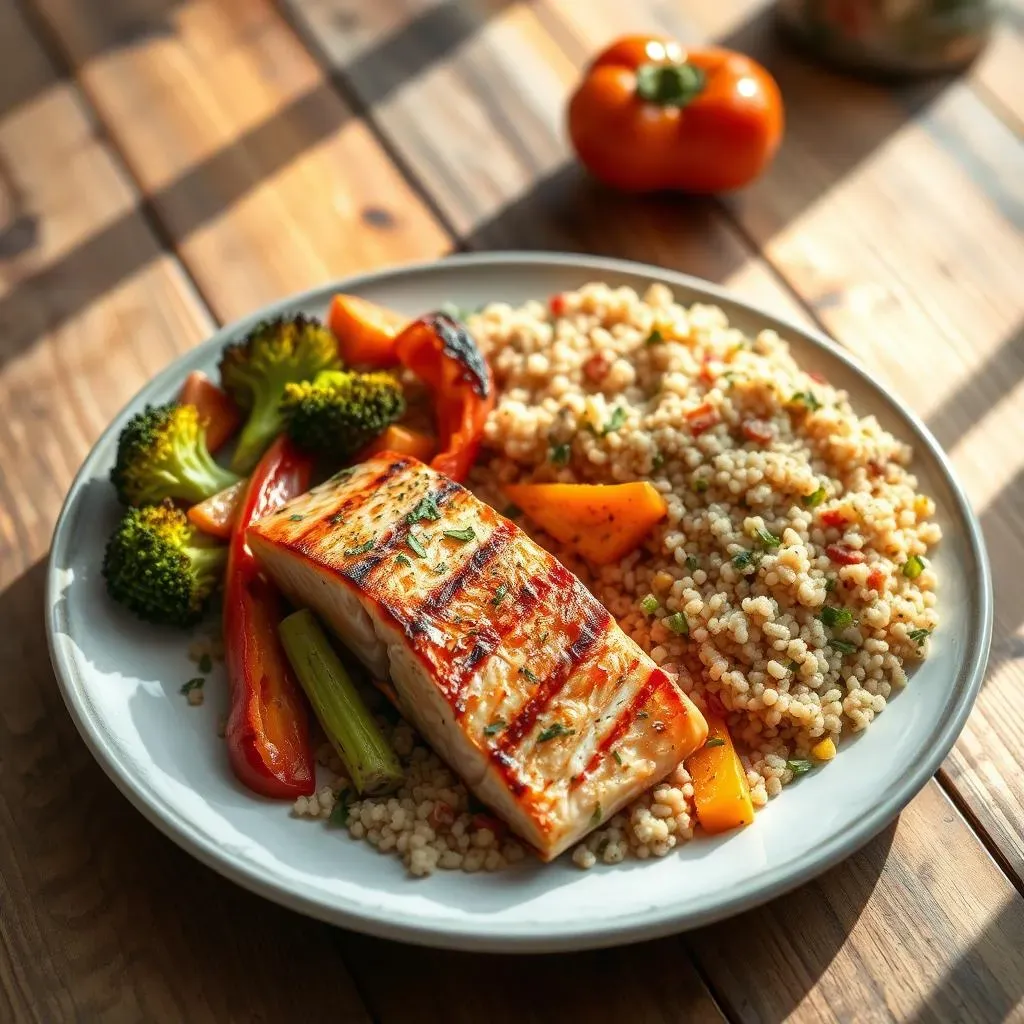
Why a Healthy Dinner Low Sodium Matters
The Sodium Overload: Understanding the Risks
Let's face it, most of us are consuming way too much sodium. It's hidden in processed foods, fast food, and even some seemingly healthy options. While sodium is essential for certain bodily functions, excessive intake can wreak havoc on our health, particularly our cardiovascular system. High sodium levels contribute directly to high blood pressure, increasing the risk of heart disease, stroke, and kidney problems. Think of your arteries like pipes – too much sodium causes them to constrict, forcing your heart to work harder to pump blood through them. Not a pretty picture, right?
It's not just about avoiding the salt shaker. Sodium is lurking everywhere! From canned soups to frozen dinners, it's often added as a preservative or flavor enhancer. This is why focusing on a healthy dinner low sodium prepared with fresh ingredients is so important. It allows you to control exactly how much sodium you're consuming and make informed choices about your health. It's about taking charge of your well-being, one delicious, low-sodium meal at a time.
The Age Factor: Why It Becomes Even More Important
As we age, our bodies become more sensitive to the effects of sodium. Our kidneys, responsible for regulating sodium levels, may not function as efficiently as they once did. This means that even moderate amounts of sodium can lead to elevated blood pressure and increased risk of heart problems. Plus, many older adults are already managing other health conditions that can be exacerbated by high sodium intake. This makes a healthy dinner low sodium even more crucial for maintaining overall health and quality of life.
Think of it like this: as we get older, our bodies are like well-loved cars. They still run, but they might need a little more TLC. A low-sodium diet is like giving your body the premium fuel it needs to keep running smoothly for years to come. It's an investment in your future health and well-being.
Specific Age-Related Risks:
- Increased risk of hypertension
- Reduced kidney function
- Worsening of existing heart conditions
Flavor Without the Salt: Reclaiming Your Taste Buds
One of the biggest misconceptions about low-sodium diets is that they're bland and boring. But that couldn't be further from the truth! A healthy dinner low sodium can be incredibly flavorful and satisfying. The key is to get creative with herbs, spices, and other natural flavor enhancers. Think garlic, onion, lemon juice, vinegar, chili peppers, and a whole host of other ingredients that can add depth and complexity to your meals without the need for excessive salt. It's a culinary adventure waiting to happen!
Consider this: many cuisines around the world rely heavily on herbs and spices for flavor, using salt sparingly. Think of the vibrant flavors of Thai cuisine, the aromatic spices of Indian dishes, or the fresh herbs of Italian cooking. By exploring these culinary traditions, you can discover a whole new world of flavor and create healthy, low-sodium dinners that are anything but bland. It's about retraining your taste buds and appreciating the natural flavors of food.
Flavor Booster | How to Use It |
|---|---|
Garlic | Add fresh garlic to sauces, soups, and stir-fries. |
Lemon Juice | Use lemon juice to brighten up salads, vegetables, and fish. |
Chili Peppers | Add a pinch of chili flakes or a chopped chili pepper for a spicy kick. |
Fresh Herbs | Use fresh herbs like basil, parsley, and cilantro to add aroma and flavor to your dishes. |
Building Blocks of a Flavorful Low Sodium Dinner
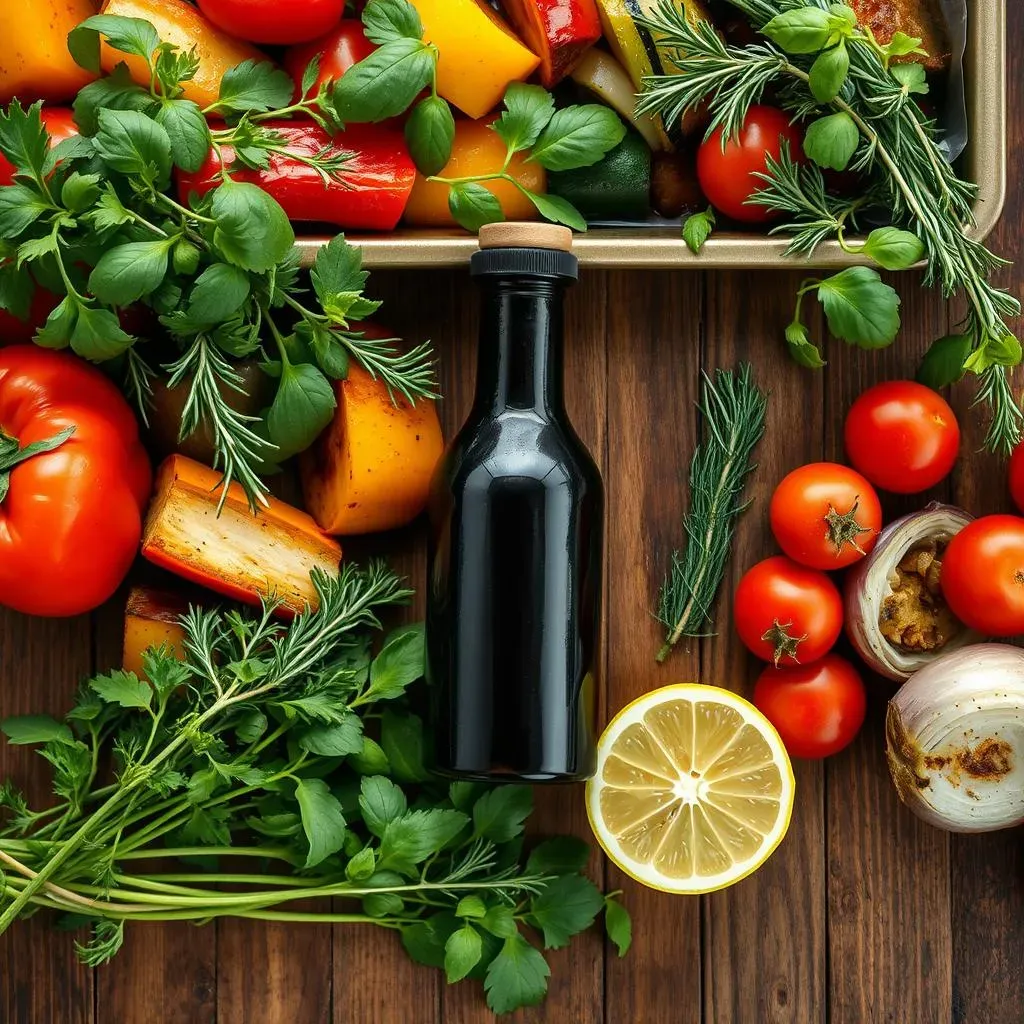
Building Blocks of a Flavorful Low Sodium Dinner
Embrace Fresh Herbs and Spices
Alright, so you're on board with the low-sodium thing, but you're worried about flavor, right? Don't sweat it! The first secret weapon in your arsenal is a vibrant collection of fresh herbs and spices. These aren't just decorations; they're flavor powerhouses that can transform a simple dish into something truly special. Think beyond just salt and pepper – explore the world of basil, oregano, thyme, cumin, coriander, paprika, and so much more. Fresh herbs, in particular, add a brightness that's hard to replicate with dried versions. Start experimenting and see what combinations you love!
For example, instead of relying on salt to flavor your chicken, try a marinade of lemon juice, garlic, rosemary, and a touch of olive oil. Or, add a generous handful of chopped cilantro and a squeeze of lime to your tacos instead of reaching for the salt shaker. The possibilities are endless, and the results are incredibly delicious. Once you start experimenting with herbs and spices, you'll wonder why you ever relied so heavily on salt in the first place. It's a game-changer, trust me.
Load Up on Flavorful Vegetables
Next up, let's talk veggies. I'm not talking about bland, boiled vegetables (shudders). I'm talking about roasting, grilling, sautéing, and otherwise coaxing out the natural sweetness and umami flavors that vegetables have to offer. Roasting vegetables, in particular, concentrates their flavors and creates a delicious caramelized crust. Think roasted bell peppers, onions, zucchini, and tomatoes – they're naturally sweet and packed with flavor, no salt required. You can also grill vegetables for a smoky char that adds another layer of complexity. The key is to get creative and experiment with different cooking methods to bring out the best in your veggies.
Don't be afraid to try vegetables you've never had before. Explore your local farmer's market and see what's in season. You might discover a new favorite vegetable that you can incorporate into your low-sodium dinners. For instance, try adding roasted butternut squash to your pasta dishes or grilling asparagus as a side dish. Not only are vegetables packed with flavor, but they're also incredibly nutritious, providing essential vitamins, minerals, and fiber. It's a win-win situation!
Vegetable | Flavor Profile | Best Cooking Method |
|---|---|---|
Bell Peppers | Sweet, slightly tangy | Roasting, grilling |
Onions | Savory, pungent | Sautéing, roasting |
Zucchini | Mild, slightly sweet | Grilling, sautéing |
Tomatoes | Sweet, acidic | Roasting, sautéing |
Acid is Your Friend
Don't underestimate the power of acid! A squeeze of lemon juice, a splash of vinegar, or a drizzle of balsamic glaze can brighten up a dish and add a much-needed zing without any sodium. Acid helps to balance flavors and create a more complex and satisfying taste experience. Think of it as the secret ingredient that elevates your low-sodium dinners from bland to brilliant. It's especially effective in sauces, dressings, and marinades, where it can cut through richness and add a refreshing tang.
Experiment with different types of acids to see what you like best. Lemon juice is a classic choice for adding brightness to fish and vegetables, while vinegar is great for salad dressings and marinades. Balsamic glaze adds a touch of sweetness and acidity to roasted vegetables and grilled meats. Don't be afraid to get creative and try new combinations. For example, try adding a squeeze of lime juice and a dash of hot sauce to your guacamole for a flavorful and sodium-free twist. It's all about finding the right balance of flavors to create a dish that you truly enjoy.
Quick & Easy Healthy Dinner Low Sodium Recipes for Weeknights
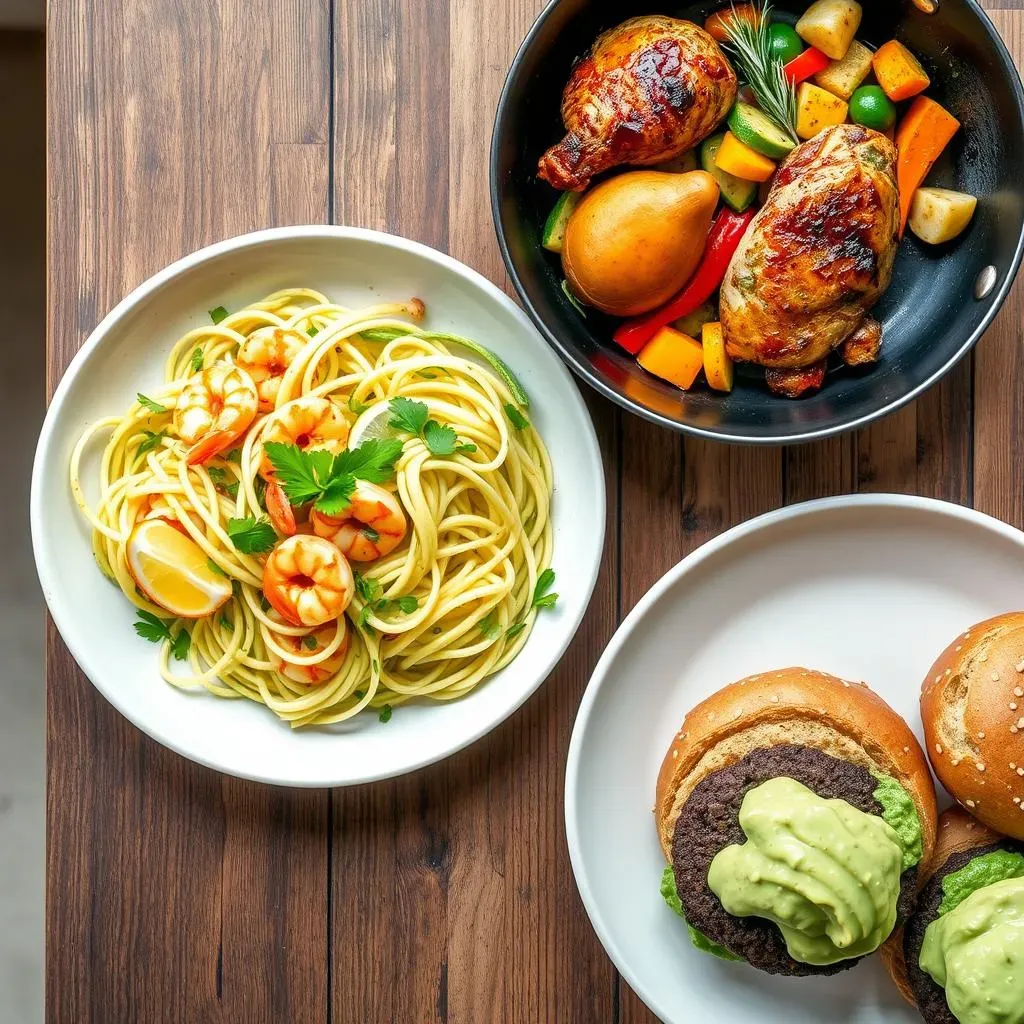
Quick & Easy Healthy Dinner Low Sodium Recipes for Weeknights
Speedy Shrimp Scampi with Zucchini Noodles
Who says you can't have a fancy-feeling dinner on a weeknight? This shrimp scampi recipe is incredibly quick, taking less than 20 minutes from start to finish. The secret is swapping out traditional pasta for zucchini noodles, which are naturally low in sodium and add a boost of veggies. Sauté some garlic in olive oil, toss in the shrimp, and then add a splash of white wine (optional, but adds great flavor!), lemon juice, and red pepper flakes. Toss with the zucchini noodles and garnish with fresh parsley. Boom! A restaurant-worthy meal that's both healthy and delicious.
To keep the sodium low, make sure to use unsalted butter and chicken broth (if using). You can also add a pinch of nutritional yeast for a cheesy flavor without the salt. Serve with a side of steamed asparagus or a simple salad for a complete and satisfying meal. It's proof that a healthy dinner low sodium doesn't have to be complicated or time-consuming. It's all about making smart choices and using flavorful ingredients.
One-Pan Lemon Herb Roasted Chicken and Veggies
One-pan meals are a lifesaver on busy weeknights. This lemon herb roasted chicken and veggies recipe is not only easy to make, but it's also packed with flavor and nutrients. Simply toss chicken thighs (or breasts) with your favorite vegetables, such as broccoli, carrots, and potatoes, and then drizzle with olive oil, lemon juice, garlic, and herbs like rosemary, thyme, and oregano. Roast in the oven until the chicken is cooked through and the vegetables are tender. It's a complete meal that requires minimal cleanup.
To ensure a healthy dinner low sodium, skip the pre-made seasoning blends, which are often loaded with salt. Instead, rely on fresh herbs and spices to flavor the chicken and vegetables. You can also add a splash of white wine or chicken broth to the pan to create a flavorful sauce. Serve with a side of quinoa or brown rice for a more substantial meal. It's a versatile recipe that you can easily adapt to your liking. Use whatever vegetables you have on hand and experiment with different herbs and spices to create your own signature flavor combination.
Ingredient | Why It Works |
|---|---|
Chicken Thighs | More flavorful and forgiving than chicken breasts, especially when roasting. |
Broccoli | Adds a nice crunch and is packed with vitamins. |
Carrots | Sweet and adds color to the dish. |
Potatoes | A hearty and satisfying addition. |
Lemon Juice | Brightens up the flavors and adds acidity. |
Rosemary & Thyme | Classic herbs that complement chicken and vegetables. |
Black Bean Burgers on Whole Wheat Buns with Avocado Crema
Who doesn't love a good burger? These black bean burgers are a healthy and flavorful alternative to traditional beef burgers, and they're perfect for a healthy dinner low sodium. Combine black beans, cooked brown rice, chopped onion, garlic, chili powder, and cumin in a food processor and pulse until coarsely ground. Form into patties and bake, grill, or pan-fry until heated through. Serve on whole wheat buns with your favorite toppings, such as lettuce, tomato, and avocado crema.
The avocado crema is a simple and delicious sauce made by blending avocado, lime juice, cilantro, and a touch of water. It adds a creamy and flavorful element to the burgers without any added sodium. You can also add a dollop of plain Greek yogurt for extra creaminess and protein. Serve with a side of sweet potato fries or a simple salad for a complete and satisfying meal. It's a great way to enjoy a classic comfort food without compromising your health.
Global Inspiration: Low Sodium Dinner Ideas From Around the World
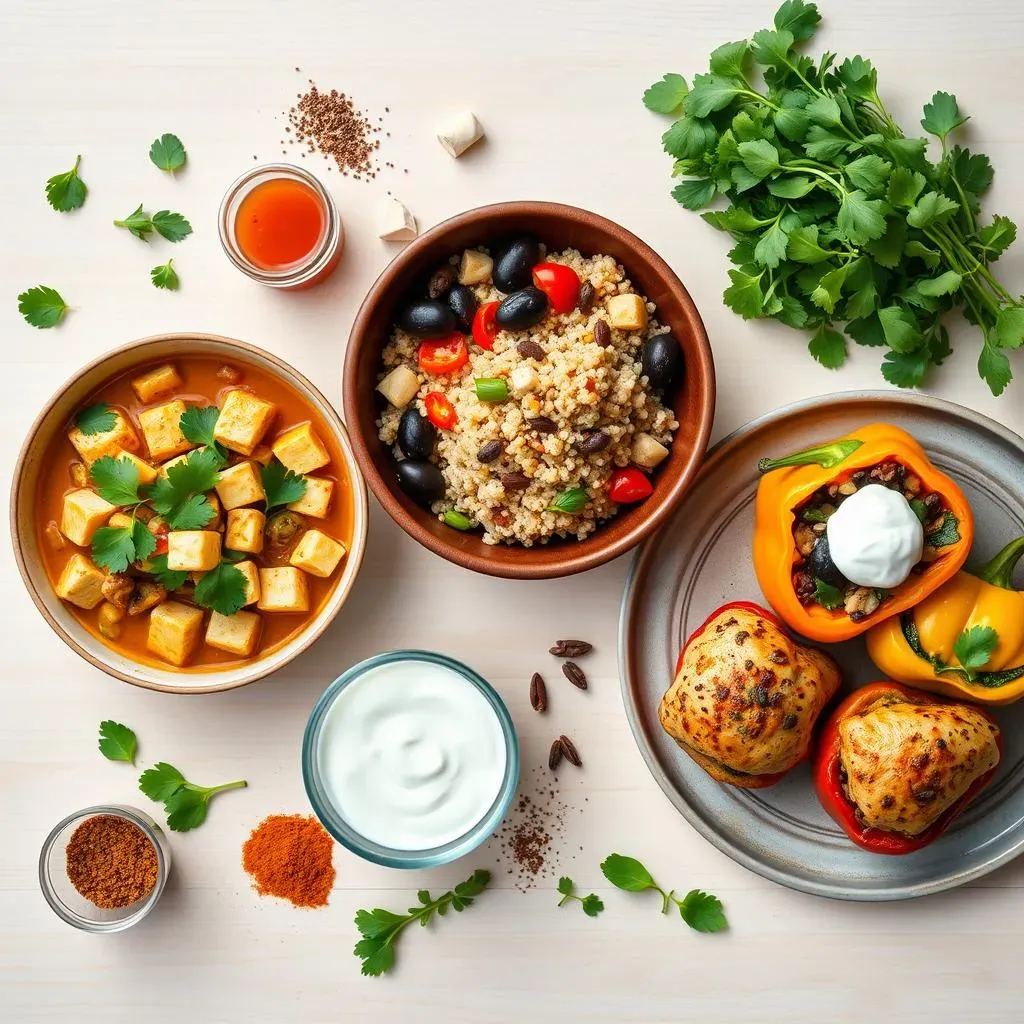
Global Inspiration: Low Sodium Dinner Ideas From Around the World
Thai-Inspired Coconut Curry with Tofu and Vegetables
Craving something exotic? Transport yourself to Thailand with a fragrant coconut curry that's naturally low in sodium. Use coconut milk as the base, and load it up with colorful vegetables like bell peppers, broccoli, and spinach. Add tofu or shrimp for protein, and season with ginger, garlic, lemongrass, and chili flakes for a flavorful kick. Serve over brown rice or quinoa for a complete and satisfying meal. The key here is to use unsalted coconut milk and avoid adding any fish sauce, which is typically high in sodium. Instead, rely on the natural flavors of the ingredients to create a delicious and authentic Thai-inspired dish.
Don't be afraid to experiment with different vegetables and spices to create your own unique version of this curry. You can also add a squeeze of lime juice at the end for a burst of freshness. It's a versatile recipe that can be easily adapted to your liking. Plus, it's a great way to sneak in extra vegetables into your diet. It's a win-win situation!
Mediterranean Quinoa Bowl with Roasted Vegetables and Feta (Optional)
For a taste of the Mediterranean, try this vibrant quinoa bowl with roasted vegetables. Roast your favorite vegetables, such as zucchini, eggplant, bell peppers, and tomatoes, with olive oil, garlic, and herbs like oregano and basil. Cook quinoa according to package directions, and then combine the roasted vegetables and quinoa in a bowl. Add a sprinkle of feta cheese (optional, but adds a salty tang), Kalamata olives, and a drizzle of balsamic glaze. It's a healthy and flavorful meal that's packed with nutrients and antioxidants.
To keep the sodium low, use a small amount of feta cheese or omit it altogether. You can also add a squeeze of lemon juice to brighten up the flavors. Serve with a side of hummus or tzatziki sauce for a more complete meal. It's a great way to enjoy the flavors of the Mediterranean without compromising your health. Plus, it's a versatile recipe that you can easily customize to your liking. Use whatever vegetables you have on hand and experiment with different herbs and spices to create your own unique flavor combination.
Ingredient | Flavor Profile | Health Benefits |
|---|---|---|
Quinoa | Nutty, slightly earthy | High in protein and fiber |
Zucchini | Mild, slightly sweet | Good source of vitamins and minerals |
Eggplant | Earthy, slightly bitter | Rich in antioxidants |
Bell Peppers | Sweet, slightly tangy | Excellent source of vitamin C |
Tomatoes | Sweet, acidic | Good source of lycopene |
Feta Cheese | Salty, tangy | Good source of calcium (use sparingly) |
Mexican-Inspired Chicken and Black Bean Stuffed Bell Peppers
Spice up your dinner routine with these Mexican-inspired stuffed bell peppers. Sauté ground chicken (or turkey) with onion, garlic, chili powder, and cumin. Add black beans, corn, and diced tomatoes, and then stuff the mixture into bell peppers. Top with a sprinkle of shredded cheese (optional, but adds a nice cheesy flavor) and bake in the oven until the peppers are tender. Serve with a dollop of plain Greek yogurt or avocado crema for a creamy and flavorful topping. It's a healthy and satisfying meal that's perfect for a weeknight dinner.
To keep the sodium low, use unsalted diced tomatoes and avoid adding any pre-made taco seasoning, which is often loaded with salt. Instead, rely on chili powder, cumin, and other spices to flavor the filling. You can also add a squeeze of lime juice to brighten up the flavors. Serve with a side of brown rice or quinoa for a more complete meal. It's a great way to enjoy the flavors of Mexico without compromising your health.
Planning Your Healthy Dinner Low Sodium Menu: Tips & Tricks
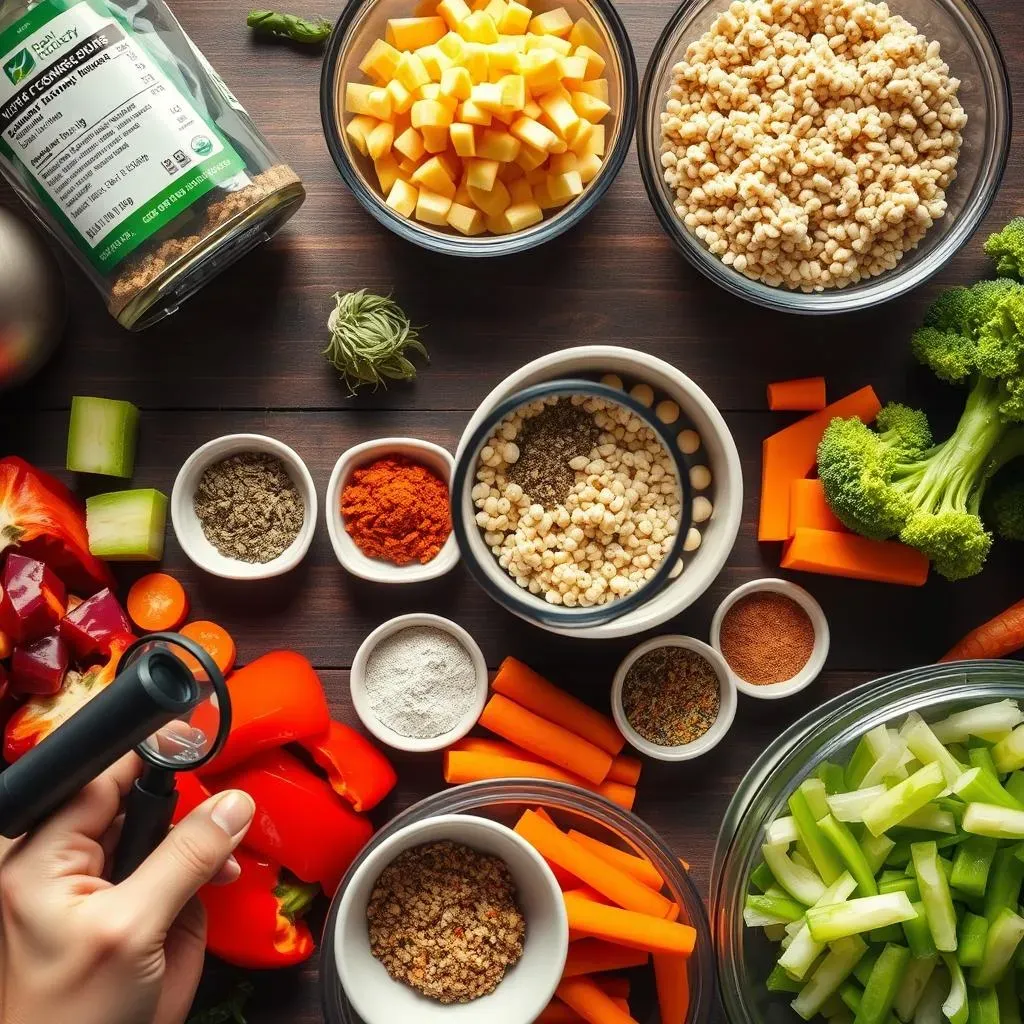
Planning Your Healthy Dinner Low Sodium Menu: Tips & Tricks
Read Labels Like a Pro
so you're ready to commit to a healthy dinner low sodium lifestyle? Awesome! But before you start whipping up culinary masterpieces, you need to become a label-reading ninja. Seriously, this is the most crucial skill you can develop. Sodium content is listed on the Nutrition Facts label, usually in milligrams (mg) per serving. Pay close attention to the serving size, because that's what the sodium content is based on. A good rule of thumb is to aim for meals with less than 600mg of sodium per serving. But remember, that's just a guideline – the lower, the better! Also, be aware of sneaky sodium sources like MSG, sodium benzoate, and sodium nitrate. These can all contribute to your overall sodium intake, even if they don't taste particularly salty.
It's not enough to just glance at the sodium content, though. You need to compare different brands and products to find the lowest sodium option. For example, canned beans can be a great source of protein and fiber, but they can also be loaded with sodium. Look for "no salt added" or "low sodium" varieties, or rinse regular canned beans thoroughly before using them. The same goes for canned soups, sauces, and broths. Reading labels can be a bit tedious at first, but it becomes second nature over time. And trust me, it's worth the effort to protect your health.
Prep Ahead to Stay on Track
Life gets busy, I get it. But when you're trying to eat a healthy dinner low sodium, failing to plan is planning to fail. Take some time each week to meal plan and prep ingredients. This will make it much easier to whip up healthy dinners on busy weeknights. Chop vegetables, cook grains, and prepare sauces ahead of time. Store everything in airtight containers in the fridge, so it's ready to go when you need it. You can even cook entire meals in advance and reheat them later. This is especially helpful if you're trying to stick to a specific diet or manage a health condition.
Think of it like this: you wouldn't go on a road trip without a map, right? Meal planning is like creating a roadmap for your healthy eating journey. It helps you stay on course and avoid making unhealthy choices when you're tired and hungry. Plus, it can save you time and money in the long run. No more last-minute takeout orders or impulse buys at the grocery store! It's all about being proactive and taking control of your health.
Prep Task | How It Helps |
|---|---|
Chop Vegetables | Saves time on weeknights and encourages you to eat more veggies. |
Cook Grains | Provides a healthy base for meals and reduces cooking time. |
Prepare Sauces | Adds flavor to dishes and helps you control sodium content. |
Cook Entire Meals | Ensures you have healthy options available even when you're short on time. |
Spice It Up, Naturally!
We've talked about this before, but it's worth repeating: herbs and spices are your best friends when you're eating a healthy dinner low sodium. Don't be afraid to experiment with different flavor combinations to find what you love. Fresh herbs like basil, cilantro, and parsley add a burst of freshness, while spices like cumin, coriander, and chili powder add warmth and depth. You can also use citrus juices, vinegars, and other acidic ingredients to brighten up dishes and balance flavors. Get creative and have fun with it! The possibilities are endless.
Consider creating your own custom spice blends to add to your meals. For example, you can combine chili powder, cumin, garlic powder, onion powder, and oregano to create a taco seasoning that's much lower in sodium than store-bought versions. Or, you can mix dried basil, oregano, thyme, and rosemary to create an Italian herb blend that you can use in sauces, soups, and stews. Making your own spice blends allows you to control the ingredients and avoid any unwanted additives. Plus, it's a great way to personalize your meals and create your own signature flavors.
Savoring Flavor, Embracing Health: Your Low Sodium Dinner Journey
Embarking on a low-sodium lifestyle doesn't mean saying goodbye to delicious dinners. As we've explored, a world of flavorful possibilities awaits, from quick weeknight meals to globally-inspired dishes. By understanding the building blocks of low-sodium cooking, experimenting with herbs and spices, and planning your menus thoughtfully, you can create healthy and satisfying meals that nourish your body and delight your palate. Remember, it's about making sustainable choices that support your well-being, one delicious, low-sodium dinner at a time. Here's to a healthier, happier you, filled with flavorful food and vibrant living!